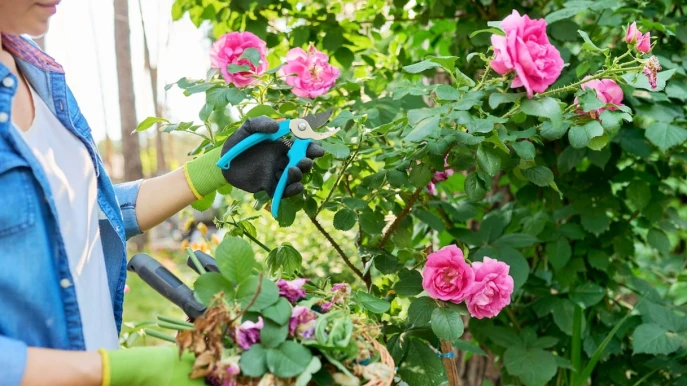Rose Mastery: A Pruning Primer for Blooming Beauties
In the realm of gardens, the rose reigns supreme—a symbol of love and a breathtakingly beautiful flower. With its myriad varieties, roses add a touch of elegance to open spaces and transform balconies into vibrant, flowery havens. While cultivating roses demands no extraordinary skills, mastering the art of pruning is essential for maintaining a healthy plant that consistently produces splendid blooms. Here’s a comprehensive guide on when and how to prune roses to keep your flower garden flourishing every spring.
Rose Royalty: Characteristics of the Plant
The rose, a member of the Rosaceae family, shares its botanical lineage with various floral and fruit-bearing counterparts, such as cherry, peach, apricot, apple, and pear. Originating in Asia Minor millions of years ago, it eventually spread across the globe, thriving in the Mediterranean’s sun-drenched locales up to 1000 meters above sea level. While the rose prefers a temperate climate and good sun exposure, it exhibits remarkable resilience to winter temperatures in our latitudes.
Roses boast numerous varieties, from bushy to climbing, and even small tree-like forms. Their flowers, diverse in size and shape, captivate with a spectrum of colors, ranging from delicate pinks to vibrant reds, whites, yellows, purples, and everything in between.
Cultivating Roses: The Art of Growth
Cultivating roses proves to be a straightforward endeavor, with planting primarily occurring in autumn, allowing the plant to establish its roots before winter’s chill sets in. In frost-prone regions, delayed sowing until early spring aligns with gradually rising temperatures. Optimal growth conditions involve choosing a location with good exposure to sunlight for the majority of the day, coupled with adequate ventilation. While some varieties tolerate partial shade, entirely shaded, excessively humid, or dry areas are best avoided.
Concerning soil preferences, roses are undemanding, yet a choice for soft, humus-rich soil is prudent to retain moisture without risking stagnation. Ample watering during the growth phase ensures the plant’s health, with care taken to avoid leaf wetting. As summer wanes, gradually reduce irrigation to prepare the rose for winter dormancy.
Pruning Roses: A Vital Ritual
While cultivating roses is undemanding, effective pruning stands out as a crucial practice to foster robust growth and prolific flowering. Pruning involves trimming old branches to make way for younger, more productive ones, contributing to a tidy and harmonious bush. Understanding not only when to prune but also the correct pruning techniques is key. Let’s delve into valuable tips.
Seasonal Pruning Schedule
Pruning roses can occur in winter, summer, and autumn, with winter pruning remaining essential for plant health. Between late January and early February (extending to March in frost-prone areas), eliminate dry or withered branches. Post-flowering pruning serves to remove diseased or pest-infested branches and manage an overly abundant bush that could impede air and light circulation.
Pruning Techniques Unveiled
Observing the plant attentively, pinpoint branches for pruning, focusing on dry, diseased ones or those growing too inwardly, hindering sunlight exposure and air circulation. The pruning cut should occur above a healthy bud, choosing an outward-facing bud for a pleasing bush shape. Make the cut in the opposite direction to the bud, ensuring an oblique angle. Maintain only 2 or 3 buds per branch to promote robust growth and vibrant roses.
For climbing roses, a slight variation in pruning involves leaving longer branches, ideally with 5 or 6 buds, to encourage optimal flowering. Maintain an oblique cut opposite the bud, using support if needed. Summer or autumn pruning primarily involves cleaning the plant of dry branches and removing withered roses to prolong the flowering period. Cover large cuts with putty and sterilize pruning tools before and after each use to prevent disease transmission.
Mastering the art of pruning ensures your roses remain healthy, luxuriant, and in perpetual bloom. Take heed of these tips for a flourishing flower garden every spring.




